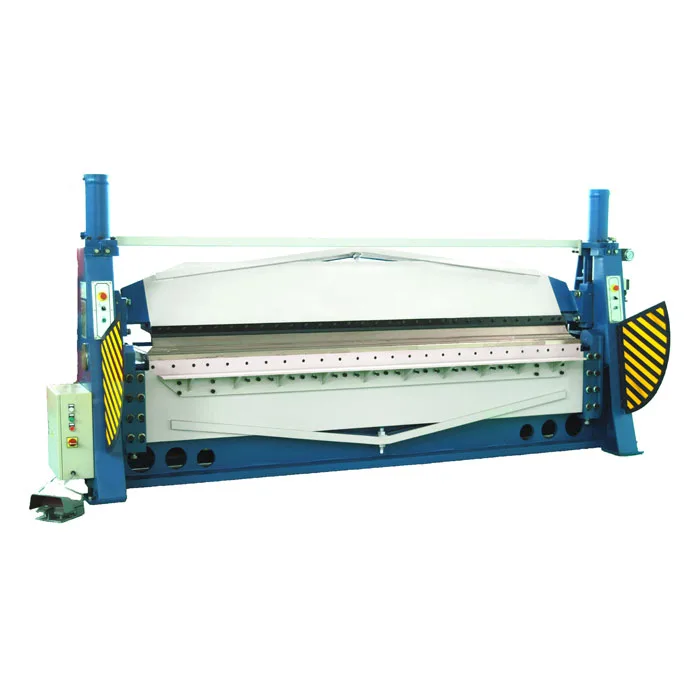
The Cost-Effectiveness of Plate Bender Machines vs. Other Bending Methods
- By:Metmac
- 2024-09-11
- 151
In the realm of metal fabrication, plate bending remains a crucial process for creating intricate shapes and components. While various bending methods exist, the cost-effectiveness of plate bender machines often makes them an attractive choice for numerous industries. This article will delve into the cost-effective advantages of plate bender machines compared to other bending techniques, highlighting factors such as labor costs, material utilization, flexibility, and maintenance costs.
Labor Costs
One of the primary advantages of plate bender machines lies in their ability to significantly reduce labor requirements. Traditional bending methods, such as manual bending or hydraulic press brakes, require skilled operators to manually position and bend the material, leading to extended production times and increased labor costs. On the other hand, plate bender machines employ automated processes that eliminate the need for extensive manual labor, minimizing overall labor expenses.
Material Utilization
Plate bender machines also offer superior material utilization compared to other bending techniques. By utilizing precise bending angles and pressure control, plate benders can optimize the material usage to minimize waste. Additionally, the automation of processes ensures consistent bending accuracy, reducing the likelihood of defective parts and subsequent material loss. By maximizing material utilization, plate bender machines contribute to cost savings through efficient resource management.
Flexibility
The versatility of plate bender machines provides a significant cost advantage over other bending methods. These machines can accommodate various material thicknesses, widths, and bending angles, making them suitable for a wide range of projects. The ability to switch between different bending operations, such as angle bending, U-bending, and conical bending, enhances the flexibility of plate bender machines. This versatility eliminates the need for multiple specialized machines, reducing capital investment and simplifying production processes.
Maintenance Costs
The maintenance requirements of plate bender machines are typically lower compared to other bending methods. Modern plate benders are engineered with durable components and advanced control systems that minimize the need for frequent repairs or replacements. Additionally, the automated nature of these machines reduces the likelihood of operator error, which can further contribute to lower maintenance costs over the lifespan of the equipment. By minimizing maintenance expenses, plate bender machines provide long-term cost savings and contribute to reduced downtime.
Plate bender machines offer compelling cost-effectiveness advantages compared to other bending techniques. The reduction in labor requirements, optimized material utilization, enhanced flexibility, and lower maintenance costs contribute to significant savings in production costs and enhanced profitability. By embracing plate bending machines, industries can streamline their operations, improve material efficiency, and gain a competitive edge in the marketplace.
-
Sheet Metal Shearing Machine: The Foundation of Precision Cutting with METMAC
2025/11/23 -
Sheet Metal Press Machine: The Cornerstone of Precision Fabrication with METMAC
2025/11/23 -
Sheet Press Machine: The Engine of Precision Metal Forming with METMAC
2025/11/23 -
Sheet Metal Equipment: The Backbone of Modern Fabrication and the METMAC Standard
2025/11/23
-
Advanced Sheet Metal Rolling, Laser Cutting, and Folding Machines for Precision Fabrication
2025/10/31 -
High-Performance Sheet Metal Bending and Cutting Machines for Modern Fabrication
2025/10/31 -
High-Quality Sheet Metal Equipment for Sale: Efficient Solutions for Modern Manufacturing
2025/10/31 -
High-Performance Sheet Metal Equipment for Sale: Forming and Shearing Solutions for Modern Fabrication
2025/10/22
-
A Guide to the Latest Innovations in Sheet Metal Folding Machines
2024/11/29 -
Key Features to Consider When Investing in a Sheet Metal Folding Machine
2024/11/28 -
Enhancing Precision with Advanced Sheet Metal Folding Machines
2024/11/27 -
How to Choose the Right Sheet Metal Folding Machine for Your Workshop
2024/11/26







